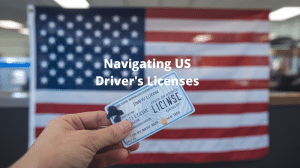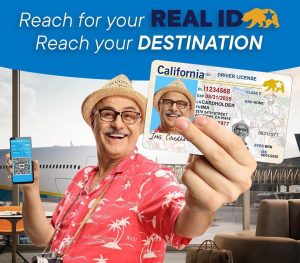
Are you dreaming of hitting the open road as a professional driver? 🚛 Whether you’re looking to transport goods across state lines or operate a commercial bus, obtaining a Commercial Driver’s License (CDL) is your ticket to a rewarding career in the transportation industry. But here’s the catch: the process can be complex and overwhelming.
From understanding the different types of CDLs to navigating through a maze of requirements and tests, many aspiring drivers find themselves lost before they even begin. The good news? We’ve got you covered! 🎉 This complete guide will walk you through every step of obtaining your CDL license, ensuring you’re well-prepared for the journey ahead.
Ready to shift your career into high gear? Let’s dive into the essential steps you need to take, from preparing for your commercial permit test to acing your road test and everything in between. Buckle up as we explore the world of CDLs, demystify the application process, and set you on the path to success in your new driving career!
Alert
Important Notice
Due to recent changes in federal regulations, there are new requirements for obtaining a Commercial Driver’s License (CDL). These changes may affect your application process and timeline. Please review the following key points:
-
New Entry-Level Driver Training (ELDT) Requirements: All new CDL applicants must complete ELDT before taking the skills test.
-
Medical Certification: Stricter health standards are now in place. Ensure your medical certificate is up-to-date.
-
Drug and Alcohol Clearinghouse: All CDL holders must register with the FMCSA Drug and Alcohol Clearinghouse.
| Requirement | Previous | New |
|---|---|---|
| ELDT | Not required | Mandatory |
| Medical Cert Validity | 2 years | 1 year for some conditions |
| Clearinghouse Check | Not required | Mandatory annual query |
Action Items:
-
Check your eligibility under the new regulations
-
Register for ELDT if you’re a new applicant
-
Schedule a DOT physical examination
-
Register with the Drug and Alcohol Clearinghouse
These changes aim to enhance road safety and ensure all commercial drivers meet the highest standards. Stay informed and prepare accordingly to avoid delays in obtaining or renewing your CDL.
Now that you’re aware of these crucial updates, let’s explore the specific deadlines for implementing these changes and how they might affect your CDL application timeline.
DEADLINE:
Important Dates for CDL Applicants
As you embark on your journey to obtain a Commercial Driver’s License (CDL), it’s crucial to be aware of key deadlines that may impact your application process. Here’s a breakdown of important dates to keep in mind:
Application Submission Deadlines
| Deadline Type | Timeframe |
|---|---|
| Standard Processing | 6-8 weeks before desired start date |
| Expedited Processing | 3-4 weeks before desired start date |
| Late Applications | Subject to additional fees and delays |
Testing and Training Deadlines
-
CDL Permit Test: Must be taken within 180 days of completing the required training
-
CDL Road Test: Schedule at least 2 weeks in advance of your desired test date
-
Medical Certification: Submit at least 30 days before your current certification expires
Renewal and Upgrade Deadlines
-
CDL Renewal: Begin process 60-90 days before expiration
-
CDL Endorsements: Apply at least 30 days before needing the additional qualification
Remember, meeting these deadlines is essential for a smooth CDL application process. Missing key dates can result in delays, additional fees, or the need to retake certain steps. Plan ahead and stay organized to ensure you’re on track to receive your CDL in a timely manner.
Now that you’re aware of the crucial deadlines, let’s explore the specific steps involved in obtaining your CDL.
Get a Commercial Driver License (CDL)
Types of CDLs
There are three main types of Commercial Driver’s Licenses (CDLs):
| CDL Class | Vehicle Type | Weight Limit |
|---|---|---|
| Class A | Combination vehicles | 26,001+ lbs |
| Class B | Single vehicles | 26,001+ lbs |
| Class C | Smaller vehicles | Under 26,000 lbs |
Each class allows drivers to operate different types of commercial vehicles. Class A is the most comprehensive, allowing drivers to operate tractor-trailers and other large combination vehicles.
CDL Requirements
To obtain a CDL, you must meet the following requirements:
-
Be at least 18 years old for intrastate driving (21 for interstate)
-
Pass a DOT physical examination
-
Have a clean driving record
-
Pass written and skills tests
-
Provide proof of residency and identity
CDL Endorsements
Depending on the type of vehicle or cargo you plan to transport, you may need additional endorsements:
-
H – Hazardous materials
-
N – Tank vehicles
-
P – Passenger vehicles
-
S – School buses
-
T – Double/triple trailers
-
X – Combination of tank vehicle and hazardous materials
These endorsements require additional testing and may have specific age or experience requirements.
Now that you understand the basics of CDLs, let’s move on to preparing for the Commercial Permit Test, which is the first step in obtaining your license.
About CDLs
Types of CDL Licenses
There are three main types of Commercial Driver’s Licenses (CDLs):
| CDL Class | Description | Typical Vehicles |
|---|---|---|
| Class A | For combination vehicles | Tractor-trailers, truck and trailer combinations |
| Class B | For single vehicles over 26,000 lbs | Straight trucks, large buses |
| Class C | For smaller vehicles with specific endorsements | Small buses, hazardous material vehicles |
CDL Endorsements
CDL holders can add specialized endorsements to their license:
-
H: Hazardous Materials
-
N: Tank Vehicles
-
P: Passenger Vehicles
-
S: School Buses
-
T: Double/Triple Trailers
-
X: Combination of Tank Vehicle and Hazardous Materials
CDL Requirements
To obtain a CDL, applicants must:
-
Be at least 18 years old (21 for interstate driving)
-
Pass a DOT physical examination
-
Have a clean driving record
-
Pass written and skills tests
-
Provide proof of citizenship or legal residency
Now that you understand the types of CDLs and their requirements, let’s explore how to prepare for the Commercial Permit Test, which is the first step in obtaining your CDL.
Step 1: Prepare for the Commercial Permit Test
Step 1: Prepare for the Commercial Permit Test
Study Materials
To successfully prepare for your Commercial Driver’s License (CDL) permit test, it’s crucial to utilize the right study materials. Here’s a list of essential resources:
-
CDL Manual: Your state’s official CDL manual
-
Online practice tests
-
CDL study guides
-
Mobile apps for CDL test preparation
-
Video tutorials
Key Topics to Focus On
When studying for your CDL permit test, concentrate on these important areas:
| Topic | Description |
|---|---|
| Traffic Laws | State and federal regulations for commercial vehicles |
| Vehicle Inspection | Pre-trip inspection procedures and safety checks |
| Basic Control | Proper steering, backing, and parking techniques |
| Communication | Using signals, managing space, and communicating with other drivers |
| Hazard Perception | Identifying and responding to potential road hazards |
Practice Strategies
Implement these effective study strategies to maximize your chances of passing the CDL permit test:
-
Set a consistent study schedule
-
Take practice tests regularly
-
Join study groups or online forums
-
Use flashcards for quick reviews
-
Attend CDL training classes if available
By following these preparation steps and utilizing the right resources, you’ll be well-equipped to tackle the CDL permit test with confidence. Next, we’ll explore the necessary documents and requirements you’ll need to gather before applying for your CDL.
Step 2: Find What You Need to Apply
Step 2: Find What You Need to Apply
A. See What Documents You Need
Before you can apply for your Commercial Driver’s License (CDL), it’s crucial to gather all the necessary documents. This step is vital to ensure a smooth application process and avoid any delays. Here’s a comprehensive list of documents you’ll need:
-
Proof of Identity
-
Proof of Residency
-
Social Security Card
-
Current Driver’s License
-
Medical Examination Report (DOT physical)
-
Proof of citizenship or legal presence
To help you understand the requirements better, here’s a table summarizing the accepted forms of documentation for each category:
| Requirement | Accepted Documents |
|---|---|
| Identity | Passport, Birth Certificate, Government-issued ID |
| Residency | Utility bills, Lease agreement, Bank statement |
| Social Security | Original Social Security Card |
| Current License | Valid non-commercial driver’s license |
| Medical Report | DOT physical examination form (less than 2 years old) |
| Citizenship/Legal Presence | U.S. Passport, Permanent Resident Card, Employment Authorization Document |
It’s important to note that requirements may vary slightly by state, so it’s advisable to check with your local Department of Motor Vehicles (DMV) for any additional state-specific requirements. Having all these documents ready will significantly streamline your CDL application process and bring you one step closer to your career in commercial driving.
Step 3: Take the Test and Get a CDL Permit
Step 3: Take the Test and Get a CDL Permit
Now that you’ve prepared for the commercial permit test and gathered all necessary documents, it’s time to take the test and obtain your CDL permit. This crucial step involves demonstrating your knowledge of commercial driving regulations and safety practices.
A. Language Access
The CDL permit test is available in multiple languages to accommodate diverse applicants. Here’s a breakdown of language options:
| Language | Availability | Notes |
|---|---|---|
| English | All locations | Standard option |
| Spanish | Most locations | Check with your local DMV |
| Other languages | Select locations | May require advance notice |
To ensure a smooth testing experience, consider the following:
-
Confirm language availability: Contact your local DMV in advance to verify language options.
-
Request an interpreter: If needed, arrange for an interpreter before your test date.
-
Bring translation aids: Some locations allow approved translation dictionaries.
-
Practice in your preferred language: Use study materials in the language you’ll be tested in.
Remember, while the test may be available in various languages, proficiency in English is often required for actual commercial driving positions. Consider this when choosing your test language.
Next, we’ll explore the specific steps to schedule your test and what to expect on the day of your CDL permit exam.
Step 4: Prepare for Your Road Test
Preparing for Your CDL Road Test
Essential Study Materials
To prepare effectively for your CDL road test, you’ll need to focus on both theoretical knowledge and practical skills. Here’s a list of essential study materials:
-
CDL manual for your state
-
Practice test questions
-
Vehicle inspection checklist
-
Road signs and signals guide
-
Defensive driving techniques handbook
Practice Makes Perfect
Dedicate ample time to practice driving a commercial vehicle. Here’s a breakdown of key areas to focus on:
| Skill Area | Practice Tips |
|---|---|
| Vehicle Control | Master steering, shifting, and braking |
| Backing Maneuvers | Practice straight line, offset, and alley dock backing |
| Road Awareness | Develop habits for constant scanning and mirror checks |
| Traffic Laws | Familiarize yourself with commercial vehicle-specific regulations |
Mock Road Tests
Simulate the actual test conditions by conducting mock road tests. This will help you:
-
Identify areas that need improvement
-
Reduce test anxiety
-
Familiarize yourself with common test routes
-
Practice time management during the test
Remember, thorough preparation is key to passing your CDL road test. By focusing on these areas and dedicating time to practice, you’ll be well-equipped to demonstrate your skills and knowledge during the actual test. In the next section, we’ll discuss how to schedule and take your road test.
Step 5: Schedule and Take Your Road Test
Schedule Your CDL Road Test
To schedule your CDL road test, follow these steps:
-
Contact your local DMV or testing center
-
Choose a convenient date and time
-
Pay the required fee
-
Confirm your appointment
Prepare for Test Day
Before taking your CDL road test, ensure you:
-
Have all required documents
-
Bring a properly maintained and insured vehicle
-
Arrive at least 15 minutes early
-
Get enough rest the night before
Taking the CDL Road Test
The CDL road test typically consists of three parts:
| Test Section | Description | Duration |
|---|---|---|
| Vehicle Inspection | Demonstrate knowledge of vehicle components and safety checks | 30-45 minutes |
| Basic Control Skills | Perform maneuvers like straight line backing and parallel parking | 30-45 minutes |
| On-Road Driving | Navigate various road conditions and follow traffic laws | 45-60 minutes |
During the test, remain calm and focused. Follow the examiner’s instructions carefully and demonstrate your ability to operate a commercial vehicle safely. Remember to use proper techniques for turns, lane changes, and backing maneuvers.
After completing the road test, the examiner will provide you with immediate feedback on your performance. If you pass, you’ll be one step closer to obtaining your CDL. If you don’t pass, don’t be discouraged. Take note of areas for improvement and schedule a retest when you’re ready.
With your road test complete, you’ll move on to receiving your results and finalizing your CDL application process.
Step 6: Get Your Road Test Results
Receiving Your Road Test Results
After completing your CDL road test, you’ll be eager to know the outcome. Here’s what to expect:
Immediate Feedback
Most examiners provide instant results after the test. They’ll typically:
-
Review your performance
-
Highlight any errors or areas for improvement
-
Inform you whether you’ve passed or failed
Understanding Your Score
CDL road tests are usually scored on a point system. Here’s a general breakdown:
| Category | Points Deducted | Fail Threshold |
|---|---|---|
| Minor Errors | 1-3 points each | Varies by state |
| Major Errors | 5-10 points each | Often 1-2 errors |
| Automatic Fails | Test terminated | Any occurrence |
Next Steps
Depending on your results:
-
If you pass:
-
Receive your temporary CDL
-
Wait for your permanent license in the mail
-
Begin your career as a commercial driver
-
-
If you don’t pass:
-
Review areas needing improvement
-
Schedule a retest (usually after a waiting period)
-
Consider additional training if necessary
-
Remember, many drivers don’t pass on their first attempt. Use any setbacks as learning opportunities to refine your skills.
Now that you know what to expect from your road test results, let’s look at some related documents that might be useful in your CDL journey.
Related Documents
A. 508_cdl-resources.pdf
The 508_cdl-resources.pdf is a comprehensive document that provides essential information for aspiring commercial drivers. This valuable resource offers a wealth of knowledge to help you navigate the CDL application process and prepare for your tests.
Key features of the 508_cdl-resources.pdf include:
-
Detailed explanations of CDL requirements
-
Study materials for the CDL permit test
-
Tips for successful CDL road test preparation
-
Information on trucking schools and CDL training programs
| Section | Contents |
|---|---|
| Requirements | Age restrictions, medical qualifications, residency proof |
| Study Guide | Practice questions, test-taking strategies, important regulations |
| Training Info | Approved trucking schools, course durations, costs |
| Application Process | Step-by-step guide, required documents, fees |
B. Related Information
To complement the 508_cdl-resources.pdf, additional related information is available to support your journey towards obtaining a CDL license. This information covers various aspects of the commercial driving industry and can be invaluable for both new and experienced drivers.
Some of the related information includes:
-
Updates on CDL regulations and compliance
-
Career opportunities in the trucking industry
-
Safety guidelines and best practices for commercial drivers
-
Continuing education and skill enhancement programs
By utilizing these related documents and information sources, you’ll be well-equipped to tackle the CDL application process and start your career as a commercial driver. As you move forward, consider exploring the option of becoming an organ donor, which is an important topic covered in the next section of this guide.
Become an Organ Donor

Organ Donation: A Noble Decision
When applying for your CDL, you have the opportunity to make a life-changing decision by becoming an organ donor. This simple act can save multiple lives and provide hope to those in need of transplants.
Benefits of Organ Donation
-
Save lives: One donor can save up to 8 lives
-
Improve quality of life: Tissue donations can help many more
-
Legacy: Leave a lasting positive impact on others
-
Cost-free: No expense to donor or their family
How to Register as an Organ Donor
-
Indicate your choice on your CDL application
-
Register online through your state’s organ donor registry
-
Sign up when renewing your driver’s license
-
Inform family members of your decision
Common Myths vs. Facts
| Myth | Fact |
|---|---|
| Doctors won’t try to save donors | Medical professionals prioritize saving lives regardless of donor status |
| Only perfect health individuals can donate | Most people can be donors, regardless of age or medical history |
| Donation interferes with funeral arrangements | Organ donation does not affect open-casket funerals |
| Religion prohibits donation | Most major religions support organ donation as an act of charity |
By choosing to become an organ donor during your CDL application process, you’re not only taking steps towards your career but also potentially saving lives. It’s a decision that aligns with the spirit of service inherent in the trucking profession.
Obtaining a Commercial Driver’s License (CDL) is a crucial step for those looking to start a career in the transportation industry. This comprehensive guide has walked you through the entire process, from preparing for the permit test to successfully completing your road test. By following these steps and dedicating time to study and practice, you’ll be well-equipped to earn your CDL and embark on an exciting new career path.
Remember, becoming a professional driver is not just about passing tests; it’s about developing the skills and knowledge necessary to operate commercial vehicles safely and responsibly. As you move forward in your journey, consider the importance of continuous learning and staying updated on industry regulations. Whether you’re planning to drive locally or across state lines, your CDL is the key to unlocking numerous opportunities in the world of commercial transportation.






